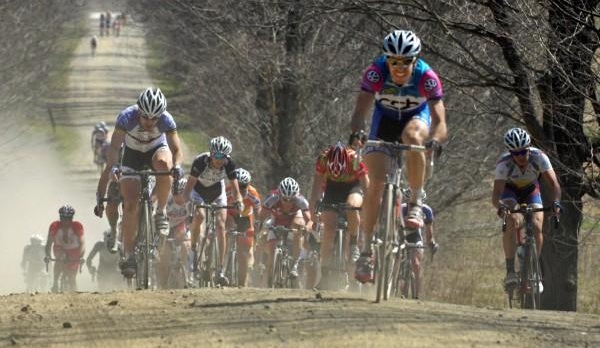
Road bikes are specialized for speed and hard pavement. Skinny, high-pressure tires are skittish, unstable and can be dangerous in gravel. But it’s a sure bet you’ll encounter gravel from a detour, road construction or a stretch of gravel on your planned route. Prepare yourself for the inevitable by following a few time-tested tips for getting through that rough patch. Your road bike is capable of much more than you think.
Gravel Upsides
Don’t be intimidated by gravel, it has it’s upside, there’s almost no traffic. Gravel roads are twisty, turny, and they often follow natural and beautiful landscapes that make cycling so much fun. You get to visit river beds, ghost towns, campsites and follow links allowing you to access stretches of pavement that you’ve always avoided. Gravel roads are often the best choices for cyclists in the need of a short cut.
Gravel Grinders
Every so often a movement arises in the bike world. While road racing on asphalt has been a seriously competitive sport for nearly a century, some cyclists have discovered that riding bikes on gravel might be fun. As a testament to gravel riding, races and ralleys in certain parts of the country have been springing up. The Grasshopper and Gravel Grinder series are two of them. Some of them are completely on gravel roads, others link asphalt and gravel roads together. It’s a given that you’re probably better off with a gravel-specific bike, gravel grinder participants use nearly every kind of bike, from full-suspension mountain bikes to cyclocross, and full-on road racing feather-weights.
Tire Concerns
Road bikes are made for hard surfaces such as asphalt and concrete. But road bikes are fully capable of riding in gravel. Tires are often the biggest issue. Some cyclists argue that road bike tires can’t handle gravel, that they pinch flat, tear or otherwise go flat. But unless you’re running the lightest, most minimalist racing tires, they hold up to gravel.
Size of Gravel
Generally speaking, when individual pebbles or rocks are smaller, or near the width of your tires, you can still ride. But take note when rocks are bigger than your tires. Riding in this type of gravel is not recommended. You run the risk of cutting your road tires — they’re just not designed for it.
No Float
Mountain bikes or other bikes with fat tires float on gravel. But road bikes don’t float on gravel, they cut into it. More momentum helps you to float to a certain extent, but too much speed can cause you to lose control, hit deep patches, or follow a line in the gravel that you don’t want to follow. Approach a new patch of gravel cautiously, and try to maintain a constant speed.
Gear Down
Most riders will need to gear down to ride gravel. A high cadence with lots of torque is your best bet in situations where the gravel or dirt gets loose. Higher cadence allows you to power through situations where you lose traction, and allows you to stay on top of the gear without having to resort to standing up—which is bad news on gravel.
Scan Ahead
Scan ahead, particularly if you’re descending. Pick a line that you can live with, and stay aware. Gravel can be deceiving, with patches and holes over 6-inches deep. It’s not easy to read gravel surfaces, but scanning ahead gives you the benefit of the doubt, and can make all the difference. Skinny road bike tires sink fast in deep gravel. If that happens, you get an up close, personal look at the gravel.
Thin Layers
Thin layers of gravel might be the most dangerous. Especially if they’re located on hard pack. If you’ve done any serious miles, you’ve probably already hit gravel on pavement. The smallest pebble can cause the front end to wash out on corners. Road bikes on pavement typically lean into corners. On gravel, it’s best to steer into the corner, and try to keep the bike as close to 90-degrees as possible to prevent washing out your front tire.
Relax
Turns and Curves
Avoid sharp turns: the deeper the gravel, the more your front wheel digs in and accentuates any sudden steering movements you might make. This is the one single mistake that causes the most falls in gravel. Consistent, smooth lines, and avoiding sudden movements, keeps you and your bike upright, particularity at higher speeds.
Don’t Be Afraid
There’s no need to avoid riding in gravel. If you do any long distance riding, adventure touring or participate in any overnight cycle events such as Cycle Oregon, the Seattle to Portland, the Alpine loop on the East Coast, or other similar rides, gravel riding is a great skill to have, and a necessary one. Don’ be intimidated by it. Learn to conquer it first, enjoy it and have fun.
If You Get Serious
If you get bit by the gravel riding bug, there’s options for doing it even more enthusiastically. In the last few years, bike builders have introduced gravel-specific models that have the toughness of a mountain bike, the geometry of a road bike and the clearance for big tires. Sometimes also referred to as adventure bikes, they’re better suited to the demands of on and off-road riding, splitting the difference between the two disciplines. Check them out if you get the chance. What have you got to lose.